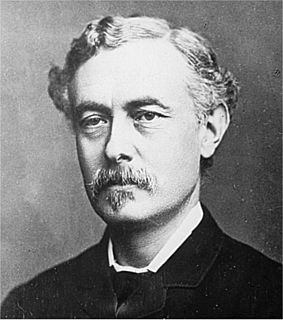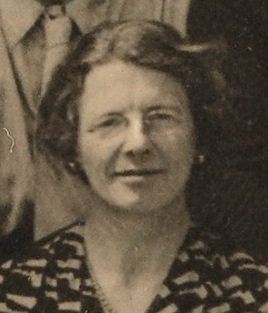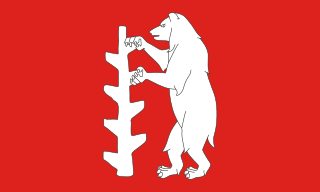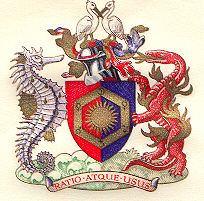
Mason Science College was a university college in Birmingham, England, and a predecessor college of Birmingham University. Founded in 1875 by industrialist and philanthropist Sir Josiah Mason, the college was incorporated into the University of Birmingham in 1900. Two students of the college, Neville Chamberlain and Stanley Baldwin, later went on to become Prime Ministers of the UK.

Henry George "Harry" Thode was a Canadian geochemist, nuclear chemist, and academic administrator. He was president and vice-chancellor of McMaster University from 1961 to 1972. Thode built a cyclotron capable of making radioactive isotopes and along with Dr. C.H. Jaimet, investigated the use of radioactive iodine in the diagnosis and treatment of thyroid disease in humans, the first medical application of radioactive iodine in Canada.

Sir David Orme Masson KBE FRS FRSE LLD was a scientist born in England who emigrated to Australia to become Professor of Chemistry at the University of Melbourne. He is known for his work on the explosive compound Nitroglycerine.
Sir Geoffrey Allen is a British chemist who has also served as a Vice-President of the Royal Society. He is primarily known for his work on the physics and chemistry of polymers. He is especially well known for his work on the thermodynamics of rubber elasticity. He inspired a generation of physical chemists as a result of his research interests, and he displayed a passion for fostering links between academia and industry.
Sir Rex Edward Richards FRS, FRSC, FBA is a British scientist and academic. He has been Vice-Chancellor of the University of Oxford and a director of the Leverhulme Trust.

Sir William Augustus Tilden was a British chemist. He discovered that isoprene could be made from turpentine. He was unable to turn this discovery into a way to make commercially viable synthetic rubber.

Dorothy Jordan Lloyd was an early protein scientist who studied the interactions of water with proteins, particularly gelatin. This is because her father was a distinguished professor of Surgery and worked at the University of Birmingham. She was also Director of the British Leather Manufacturers' Research Association. She was the first to propose that the structure of globular proteins was maintained by hydrogen bonds, an idea championed later by Linus Pauling and others.

Archibald Liversidge FRS FRSE FRSNSW LLD was an English-born chemist and founder of the Australasian Association for the Advancement of Science.

John Sebastian Bach Stopford, Baron Stopford of Fallowfield KBE FRCS FRCP FRS was a British peer, a physician and anatomist, and a Vice-Chancellor of the University of Manchester. Lord Stopford was described as "one of the greatest anatomists of this century".
James Pickering Kendall FRS FRSE was a British chemist.
Graham John Hutchings FRS FIChemE FRSC FLSW is a British chemist, professor and Pro Vice-Chancellor for Research at Cardiff University.
Professor Frank Horton FRS was professor of physics at Royal Holloway College, London University from 1914 to 1946 and later Vice-Chancellor of London University during the years of World War II from 1939 to 1945.
Hugh Hale Leigh Bellot FRHS was an English historian; he was Professor of American History and Vice-Chancellor of the University of London from 1951 to 1953. His writings were published under the name "H. Hale Bellot".
Maurice Stacey CBE FRS FRIC was a British chemist who worked alongside Sir Norman Haworth to artificially synthesize Vitamin C.
Raymond Edward Smallman was a British metallurgist and academic known for his research into alloys and the causes of metal fatigue. Smallman was also a significant figure at the University of Birmingham, serving as its vice-principal between 1987 and 1992 and helping to establish its reputation as a leading modern research university.

Arthur Smithells, CMG FRS was a British chemist. Born in Bury, Lancashire, on 24 May 1860. His father James Smithells, was a railway manager. He was educated at University of Glasgow, then spent time under Roscoe and Schorlemmer at Owens College, Manchester. He gained his B.Sc. from the University of London, then took supplemental courses at Munich and, with Robert Bunsen, at Heidelberg University. In 1883 he was appointed assistant lecturer at Owens College, and two years later succeeded Professor Sir Edward Thorpe as Professor of Chemistry in Yorkshire College, Leeds, which was subsequently incorporated as the University of Leeds. Smithells went on to hold the position of Pro-Vice-Chancellor at Leeds, which he held until he retired from the Chair then becoming Emeritus Professor in 1923. During his career he was Honorary Educational Adviser on Home Science and Household Economics to King's College London, President of the Society of British Gas Industries (1911).
Sir James Wilfred Cook FRS FRSE DSc LLD (1900–1975) was an English chemist, best known for his research of organic chemistry of carcinogenic compounds. Friends knew him simply as Jim Cook.
Patrick Joseph A. Dowling, CBE FRS is an Irish engineer and educationalist.
Mary Corner, was a pharmacist, a worker in the British Cotton Industry and British Leather Manufacturers, Head of the Micro-analytical Section of the Chemical Research Laboratory, Vice-Chairman of the Microchemistry group and a founding member of the Microchemical Club.

















